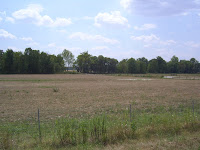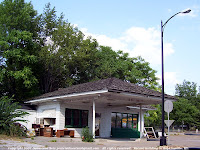Traditional keyboarding or otherwise?
 I learned to type from Miss Tibbits, who ruled a roomful of manual, Royal office models with an iron hand.
I learned to type from Miss Tibbits, who ruled a roomful of manual, Royal office models with an iron hand.Miss Tibbits didn't tolerate any weird fingering of the typewriter keys. I learned to place my fingers in "ASDF JKL;" position and to use my right thumb for the space bar. I think it's called "touch typing." I still type that way!
When I worked in classified ads at the newspaper and typed like crazy every day, I even learned to reach up and hit the numbers fairly accurately as I sped along.
Dennis is a hunt-and-pecker. He uses three fingers total (two on the right hand, and one on the left.) He says when he gets enough typing practice on a regular basis, he builds up speed.
Keely types as I do, more or less -- all eight fingers on the keys plus a thumb for the space bar.
Today, I learned that Isaac types with three fingers on each hand -- his thumbs, pointers, and middle fingers. He doesn't use his ring fingers or pinkies at all. He says he goes pretty fast, and I agree that he does.
I'm amazed that his keyboarding teacher allowed him to type that way! Obviously, she was no Miss Tibbitts.
I am also amazed that he hits letter keys with his thumbs. My thumbs can't even imagine that.


























